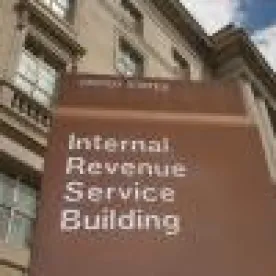On July 1, 2021, the Internal Revenue Service released Revenue Ruling 2021-13, which addresses several issues relating to qualifying for the Section 45Q carbon capture sequestration credit. This is the federal income tax credit determined on a per metric ton of qualified carbon oxide captured by taxpayers using carbon capture equipment placed in service on or after Feb. 9, 2018, and disposed, injected, or otherwise utilized in a manner constitute with the rules. The credit is available over a 12-year period from the date such equipment is placed in service.
The Ruling concerns a methanol plant with an existing acid gas removal (AGR) unit placed in service in 2017. Historically, the facility released the CO2 separated by the AGR unit into the atmosphere. During 2021, an investor purchased and installed new components of carbon capture equipment necessary to create a single process train capable of capturing, processing, and preparing for transport this CO2. The investor did not acquire an ownership interest in the AGR unit or the facility itself.
The Ruling considered the following:
Is the AGR unit considered carbon capture equipment for purposes of Section 45Q?
The Ruling observes that all components that make up an independently functioning process train capable of capturing, processing, and preparing carbon oxide for transport will be treated as a single unit of carbon capture equipment and that the rules provide a functionality-based definition that does not consider the “primary purpose” of the equipment or whether the equipment may otherwise be considered “dual use” property.
The Ruling concludes that because one of the functions of an AGR unit is to separate CO2 from a gas stream, the AGR unit is carbon capture equipment for purposes of Section 45Q.
Is the investor required to own every component of carbon capture equipment within a single process train to be the person to whom the credit is attributable?
The Ruling notes that the final Section 45Q Treasury regulations provide that, for each single process train of carbon capture equipment, only one taxpayer will be considered the person to whom the 45Q credit is attributable. That person will be the taxpayer who either (x) physically ensures the capture and disposal, injection, or utilization of the qualified carbon oxide or (y) contracts with others to capture and dispose, inject, or utilize such qualified carbon oxide. The Ruling notes that this requirement ensures that, for each single process train, only the person responsible for compliance with the Section 45Q requirements may be the person to whom the Section 45Q credit is attributable.
The Ruling holds that a taxpayer must own at least one component of carbon capture equipment in the single process train to be the person to whom the Section 45Q credit is attributable, but is not required to own all of the components of carbon capture equipment within such single process train.
What is the original placed-in-service date of the single process train of carbon capture equipment that includes an existing AGR unit and new components of carbon capture equipment?
The Ruling provides that because all components that make up an independently functioning process train capable of capturing, processing, and preparing carbon oxide for transport is treated as a single unit of carbon capture equipment, the relevant placed-in-service date for purposes of Section 45Q is the original placed-in-service date of the single process train. That date will be the date on which the single process train is first placed in a condition or state of readiness and availability for its designed function of capturing, processing, and preparing carbon oxide for transport for disposal, injection, or utilization.
As provided in the Ruling, if this function cannot occur until new components of carbon capture equipment are added to the facility, then the original placed-in-service date of the single process train will not be earlier than the date such new components are installed and complete the single process train, thus putting it in the condition to perform its specifically designed function.
How does the original placed-in-service date of the single process train affect the placed-in-service date of the existing AGR unit for depreciation purposes?
The Ruling concludes that the Section 45Q provisions are not relevant for depreciation purposes. Here, there will be two placed-in-service dates: one for the AGR unit and one for the new components of carbon capture equipment. In other words, the placed-in-service date for the single process train will not impact the placed-in-service date of the existing AGR unit.


 />i
/>i

